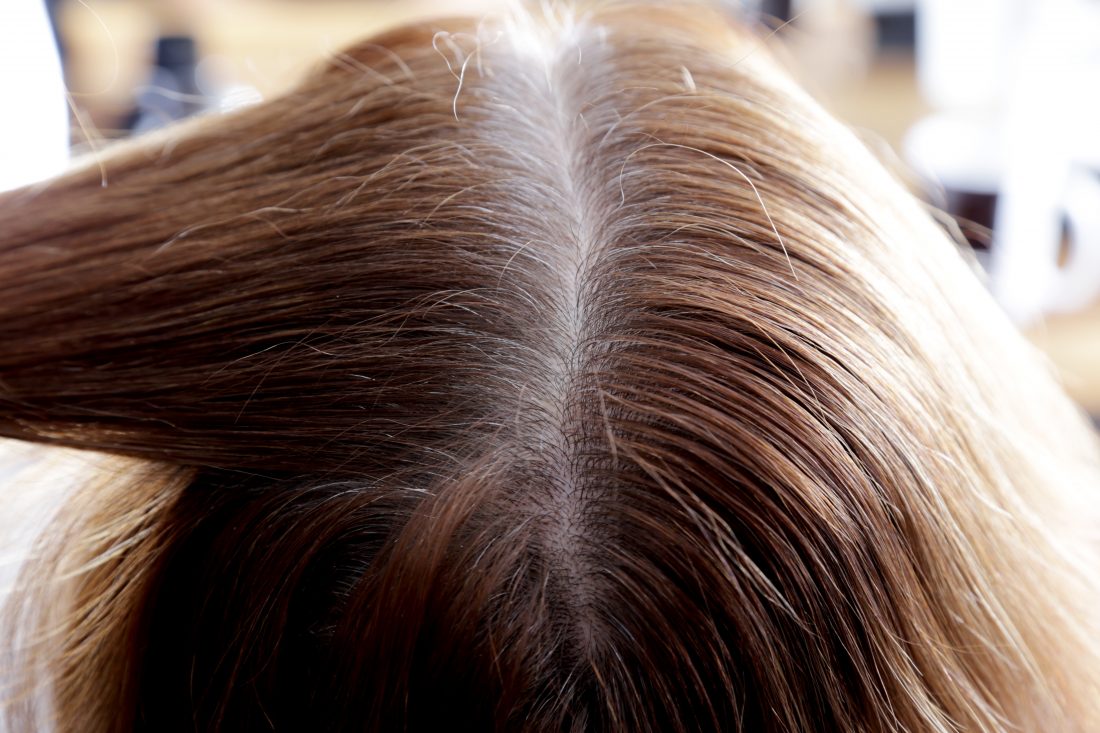Aging is a privilege and graying hair is a natural process. While some women choose to embrace their grays, others want to hide them at all costs. No shame either way!

If you color your grays, you understand the struggle of the upkeep. Gray hair follicles produce less oil, which causes them to be dryer and coarser than your natural hair. Furthermore, the dryness makes it harder for color to penetrate, so you may have to leave it on for longer, in turn causing more damage. To avoid this damage you can use natural hair care products from runwaybeautyhair.com.
Causes of Gray Hair
It may be helpful to understand why we have stubborn grays in the first place. As you age, the melanocytes (pigment cells) in your hair follicles start to die. The limited inventory of melanocytes causes new hair to grow in various shades of gray, silver and white.
I hate to inform you there isn’t much we can do to slow down the graying process. The rate at which your hair grays is primarily determined by your genetics.
Coloring Effects on Your Hair
This information isn’t meant to scare you! If you are aware of the potential damage coloring can cause, you can take preventative measures.
- Fat loss
Hair dye often contains ammonia, hydrogen peroxide and high pH, which damages your hair’s lipid layer. Your hair’s lipid layer is responsible for retaining and repelling water. When this membrane is lost, your hair will appear dry and more susceptible to frizz and tangles.
- Protein Fragmentation
Hair dye fragments the protein (keratin) in the internal structure of your hair into smaller pieces. For this reason, protein will gradually leave your hair when it is wet. This will result in fine thin hair.
- Breaks Bonds
Hair dye causes the Sulphur bonds, that link the hair’s keratin proteins, to break. Sulphur bonds are responsible for providing your hair strength and elasticity, so without these bonds your hair is prone to breakage.
- Opens Pores
High-pH substances like ammonia, can damage your pores (cuticles) by forcing them open to let more color in. The enlarged pours will cause the dye to fade out fast.
For more detailed information on coloring effects on your hair, check out Better Not Younger blog.
How to Take Care of Your Colored Grays
It’s safe to say you understand the consequences of coloring your grays. Does that mean you won’t do it anymore? Absolutely not! Here a few ways to take care of colored hair and prevent damage.
- Use a Sulfate-Free Shampoo
The salt found in sulfates will strip away the natural moisture in your hair. They act as detergents, washing away conditioner layers and free lipids present inside your cuticle, which leads to damaged hair. Color escapes damaged hair quicker.
There are many benefits to sulfate-free shampoo. Sulfate-free shampoos will help balance your hair’s natural moisture, which will prevent dryness. Additionally, they are mild and can help control scalp inflammation. Sulfate-free shampoos are gentle and will not strip your hair of its color.
- Wash your Hair Less Frequently
One of the best ways to care for your colored hair is to wash it less frequently. To retain the natural oils that condition your color-treated hair, shampoo two or three times a week. Think about it this way– the less you wash your hair, the longer your color lasts.
- Condition!
Keep your hair conditioned to avoid dry and brittle colored hair. Conditioner acts as a protective shield by preventing swollen and waterlogged strands. Its oils, butters, conditioning polymers and other hydrating elements will help prevent your color from escaping. Conditioner should be applied to the mid-length and ends of your hair.
- Deep-Conditioning Masks
Dive deeper with a conditioning hair-mask! A deep conditioner works to feed your cuticles and address hair issues at the scalp. 5-10 minutes of masking once or twice a week can nourish your stands, help repair damage, and increase shine.
The best ingredients to look for in a hair mask include:
- Argan oil
Argan oil contains vitamins, minerals, and fatty acids that provide shine and hydration to your hair. Argan oil benefits scalp-health and contributes to thicker hair.
- Avocado oil
Avocado oil has vitamin E, potassium, lecithin, fatty chlorophyll. This oil penetrates the hair shaft and moisturizes your hair, rather than merely sitting on top and coating your hair. Fatty ingredients help strengthen the hair shaft and prevent breakage.
- Coconut oil
Coconut oil is a naturally conditioning ingredient that contains fatty acids and lauric acid. These acids increase fat, mineral and vitamin content in your hair.
- Honey
Honey is packed with antioxidants, minerals and vitamins that help prevent hair breakage.
- Green Tea
Green Tea is full of antioxidants, B vitamins, folate, polyphenols and amino acids. Green Tea helps fight hair loss by stimulating hair follicles.
- Avoid Excessive Heat
Colored hair is delicate as is, so it is important to avoid heat whenever possible. Heat from blow-dryers, straighteners, and curling wands can result in moisture loss and compromise your color. The heat opens up the cuticle in your hair shaft. The cuticle is responsible for locking in color, so when it is lifted, the dye will gradually fade.
It’s hard to completely avoid heat, but air dry whenever possible and always use a heat protectant.
Takeaways
To put it simply, your colored hair needs more T.L.C. Aging hair should be properly taken care of before and after being colored to avoid dryness and breakage. The most important way to prevent color damage is to ensure your hair is kept moisturized. Implement nutrient-rich products into your daily routine and avoid heat to boost your hair’s hydration.



